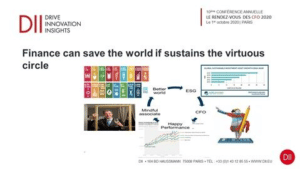Leonardo painted Happiness

The subject of centuries of scrutiny and debate: how to measure happiness solved by the genius of Leonardo. He wasn’t able to measure it but he. …painted it. Stare at Mona Lisa and mirror yourself into Happiness
Happy people recognized Mona Lisa Happy smile
According to an article by Relax news on Luxuo.com on Mar 19th 2017, the most famous painting by Leonardo Da Vinci Mona Lisa ‘s famous smile, routinely described as ambiguous, has been decoded by Researchers: Mona Lisa’s smile means “HAPPY”.The article refers that: “According to an unusual trial, close to 100 per cent of people described her expression as unequivocally “happy“, researchers revealed. “We really were astonished, neuroscientist Jürgen Kornmeier of the University of Freiburg, who co-authored the study, told AFP.”
Happiness – as defined by Wikipedia – is a mental or emotional state of well being defined by positive or pleasant emotions ranging from contentment to intense joy. Various research groups, including positive psychology and happiness economics are employing the scientific method to research questions about what “happiness” is, and how it might be attained and measured.
The way to measure it generated a lot of debate due to its subjective components, OECD has even issued in 2013 Guidelines that “mark an important turning point in our knowledge of how subjective wellbeing (happiness) can, and should, be measured. Not long ago, the received wisdom was that “we don’t know enough” about subjective well being to build it into measures of societal progress. However, as the evidence documented in these Guidelines shows, we in fact know a lot – perhaps more than we realised until we gathered all the relevant material for this report – and in particular that measures of subjective well-being are capable of capturing valid and meaningful information. (..) Subjective well-being data can provide an important complement to other indicators already used for monitoring and benchmarking countries performance, for guiding people’s choices, and for designing and delivering policies. Measures of subjective well being show meaningful associations with a range of life circumstances, including the other dimensions of well being explored in the Better Life Initiative. However, because a variety of factors affect how people experience and report on their lives, including factors such as psychological resilience in the face of adversity, and potential cultural and linguistic influences that are not currently well-understood, subjective well-being can only tell part of a person’s story”
Let’s go back to Leonardo, despite being unaware of this complexity, he was able to paint Happiness in Mona Lisa smile so when we stare at Mona Lisa we perceive what well being (Happiness) is.The article explains “Kornmeier and a team used what is arguably the most famous art piece in the world in a study of factors that influence how humans judge visual cues such as facial expressions. Mona Lisa is often held up as a symbol of emotional enigma. The portrait appears to many to be smiling sweetly at first, only to adopt a mocking sneer or sad stare the longer you look. Using a black and white copy of the early 16th century masterpiece, a team manipulated the model’s mouth corners slightly up and down to create eight altered images — four marginally but progressively “happier” and four “sadder” Mona Lisa’s. A block of nine images was shown to 12 trial participants 30 times. In every showing, for which the pictures were randomly reshuffled, participants had to describe each of the nine images as happy or sad.The findings confirm that “we do not have an absolute fixed scale of happiness and sadness in our brain” and that a lot depends on context, the researcher explained. “Our brain manages to very, very quickly scan the field. We notice the total range, and then we adapt our estimates” using our memory of previous sensory experiences, he said.Another interesting discovery was that people were quicker to identify happier Mona Lisas than sad ones. This suggested “there may be a slight preference …in human beings for happiness” said Kornmeier.
How Happiness is measured at Country level
While the brain can hardly recognize and quantify someone else’s happiness, socio economists try to measure it every year, gathering different data to be shared in the annual report that aims to measure the level of Happiness for almost 200 countries. They utilize 8 criteria -objectives and subjectives-: The first one, most commonly utilized in many economic measures is GDP per capita – adjusted in terms of Purchasing Power Parity (PPP) – measures the impact that income has on Happiness. Based on past analysis, Income variation contributes to 2% of total Happiness variation across countries. Above a certain threshold of Income per capita (above 35/40K$) happiness does not grow linearly. The time series of healthy life expectancy at birth measure the important element of physical health. A third element is Social support (or having someone to count on in times of trouble), then Freedom to make life choices is a powerful motivator of internal wellness, Generosity – “Have you donated money to a charity in the past month?” on GDP per capita. Finally Perceptions of corruption reduce Happiness status. Positive affect is defined as the average of previous-day affect measures for happiness, laughter and enjoyment and Negative affect is defined as the average of previous-day affect measures for worry, sadness and anger.
In the 2017 Report, all of the top four countries rank highly on all the main factors found to support happiness: caring, freedom, generosity, honesty, health, income and good governance. Their averages are so close that small changes can re-order the rankings from year to year. Norway moves to the top of the ranking despite weaker oil prices hitting GDP. It is sometimes said that Norway achieves and maintains its high happiness not because of its oil wealth, but in spite of it. By choosing to produce its oil slowly, and investing the proceeds for the future rather than spending them in the present, Norway has insulated itself from the boom and bust cycle of many other resource-rich economies. To do this successfully requires high levels of mutual trust, shared purpose, generosity and good governance, all factors that help to keep Norway and other top countries where they are in the happiness rankings. All of the other countries in the top ten also have high values in all six of the key variables used to explain happiness differences among countries and through time—income, healthy life expectancy, having someone to count on in times of trouble, generosity, freedom and trust, with the latter measured by the absence of corruption in business and government.
Measuring Happiness when listening the web
A company, believes that the subjective method to measure Happiness is the most reliable and “reading people’s feelings via listening to their messages on Twitter is better then asking them if they feel Happy” as done in the Happiness Report. They propose a quicker methodology to measure in real time the level of Happiness in a certain area. It is based on iSA (integrated sentiment analysis), a novel algorithm designed for social networks and Web 2.0 sphere (Twitter, blogs, etc.) opinion analysis, i.e. developed for the digital environments characterized by abundance of noise compared to the amount of information. Instead of performing an individual classification and then aggregate the predicted values, iSA directly estimates the aggregated distribution of opinions. Through empirical analysis it was demonstrated that iSA outperforms machine-learning techniques of individual classification (e.g. SVM, Random Forests, etc.) as well as the only other alternative for aggregated sentiment analysis known as ReadMe.
Voices routinely produces based on the algorithm daily statistics about the level of Happiness in Italian cities, showing trends, normal distribution. I checked its validity, too: when Pope Francisco visited Milan last week all indicators on Twitter were on HAPPY!
What Happiness is not: Misery
As it is difficult to measure Happiness, the Economist in a recently published study, referring and leveraging the annual publication of the World Happiness report, tries to unpick what make people happy and sad. It is not easy according to it to measure happiness but we know what make people sad: Mental illness, Unemployment, Poverty, Being without a partner, Being uneducated or physical ill. Some of it can be measured and in the article various rankings and comparisons are made.
Can Artificial Intelligence measure Happiness?
In an interesting very recent podcast HR Happy Hour 279 – Artificial Intelligence for HR and for People (Listen HERE) Steve Boese and special guest co-host Madeline Laurano recorded a special Happy Hour Show live from Ultimate Connections 2017 in Las Vegas. They were joined by Ultimate Software’s Cecile Alper-Leroux and Armen Berjikly to talk about the need to listen to the ‘Voice of the Employee’, the importance of technology to help HR leaders understand data, (especially unstructured data), and how modern technology solutions can help HR leaders move from just listening, to understanding, and finally, to taking actions, (and recommending actions). With a similar logic of Voices, they feel that getting data via AI is better then simply asking people how they feel.
The theme for the Ultimate Connections Conference was ‘Elevate’ – and the key idea to how HR and business leaders can elevate the employee experience by listening to their needs more closely, applying new technologies that can help analyze data from employee surveys and other disparate sources for things like sentiment and tone, and finally using those insights to take actions that can improve the organization and the individual employee experience. Technology can help measure in real time Happiness levels.
An ambitious European Union Project can help to gather data on Company Happiness (well being)
The European Union has approved a Directive on disclosure of non-financial and diversity information (2014/95/EU) entered into force in December 2014. This ambitious legislation requires around 6,000 large companies listed on EU markets, or operating in the banking and insurance sectors, to disclose relevant environmental and social information in the management report, with the first reports to be published in 2018 (on financial year 2017).
The Directive requires the Commission to prepare non-binding guidelines to be published as soon as possible in the spring 2017.
Financial and non-financial reporting provides shareholders and other stakeholders with a meaningful, comprehensive view of the position and performance of companies.
Large public-interest entities (listed companies, banks, insurance undertakings and other companies that are so designated by Member States) with more than 500 employees should disclose in their management report relevant and useful information on their policies, main risks and outcomes relating to at least environmental matters, social and employee aspects, respect for human rights, anticorruption and bribery issues, and diversity in their board of directors.
There is significant flexibility for companies to disclose relevant information (including reporting in a separate report), as well as they may rely on international, European or national guidelines (e.g. the UN Global Compact, the OECD Guidelines for Multinational Enterprises, ISO 26000, etc.).
How Finance can contribute to measure?
The purpose of my recent articles on LinkedIn is to increase awareness about how Finance can contribute to a betterSociety, taking inspiration from Robert J. Shiller: “Finance truly has the potential to offer hope for a more fair and just – and Happy, I add, – world”
Companies are a team or group of individuals with a common goal. The level of Happiness of that team is influenced by how “hard measurable objectives” are achieved and how is the culture/spirit of the team. The Objective and Subjective elements contribute to the level of Happiness, even though it is not defined in this way. Normally companies refer to a so-called “level of engagement” that is a proxy of Happiness. So Companies are not far from being able to measure how much people are Happy to work there and being part of a wider Society, a Company could also try to measure how it contribute to the overall Happiness. The EU Directive it is an important incentive to do so.
In the next article I will share how companies are preparing to measure their impact and how much they are willing to embark in measuring Happiness.




